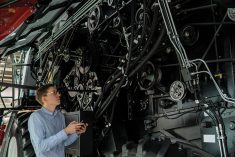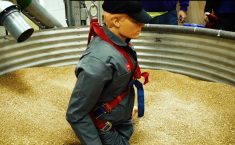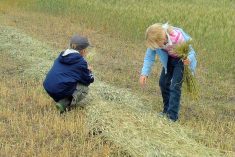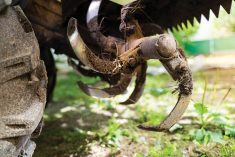A warm shop is a genuine pleasure in the winter. Puttering around, fixing equipment, or even just enjoying the quiet of the workshop without the pressures of field work is a treat in the winter. However, there are some hazards to keep in mind when performing repairs, maintenance, fabrication, or other routine job tasks in our garages, shops, barns, sheds or Quonsets this winter.
According to Statistics Canada, there were 1,125 fatalities from carbon monoxide poisoning in Canada between 2000 and 2013. Carbon monoxide is often called the silent killer because it gives no clear warning to its victims. It is a clear, colourless gas that has no smell or taste. Carbon monoxide is produced as a byproduct of burning carbon-based fuels. Sources of carbon monoxide in these areas could include exhaust fumes, gas or oil furnaces, some types of welding, water heaters or fireplaces.
Read Also

Gentle treatments for pain in the neck
Heading toward year-end, people unknowingly tense up against the cold and busyness, causing neck pain that can often be treated with appropriate support and gentle mobility, athletic therapist Kathlyn Hossack says.
Carbon monoxide enters the body through the lungs during the normal breathing process. It replaces oxygen in the bloodstream and prevents the flow of oxygen to the heart, brain and other vital organs. When it is inhaled, it reduces the body’s ability to carry oxygen in the blood. Carbon monoxide is dangerous at any level. Even low exposures can result in damage.
Symptoms of carbon monoxide poisoning are like cold, flu and allergy symptoms. Low levels of poisoning can result in headaches, lethargy, weakness, nausea and muscle aches. Higher levels can result in paralysis, impaired judgment, coma and death if left untreated.
The only way to accurately detect its presence is by installing a carbon monoxide detector. Unfortunately, they should be installed on every level of your home but are not recommended for garages, shops, etc. A portable air monitor that tests for carbon monoxide could be used in these areas.
Some ways to minimize carbon monoxide exposures in garages, shops and other areas include the following:
- Ensure heaters and equipment, such as tractors, are maintained and running efficiently.
- Use electrically powered equipment whenever possible in indoor spaces.
- Minimize the amount of time that tractors and equipment are left running in indoor spaces.
- Monitor carbon monoxide levels.
- Maintain adequate ventilation in indoor spaces.
- Use portable heaters according to manufacturer instructions and vent the exhaust outside.
Watch everyone for any sign of carbon monoxide poisoning and never ignore the signs. If anyone has symptoms of carbon monoxide poisoning, immediately turn off equipment and move away from the area and into fresh air and seek medical attention immediately. The area should be ventilated and tested for the presence of carbon monoxide before re-entry.
Enjoy the slower times this winter and those toasty workspaces, but remember, breathe easy and take precautions to avoid carbon monoxide exposure. For more information about farm safety visit casa-acsa.ca.














